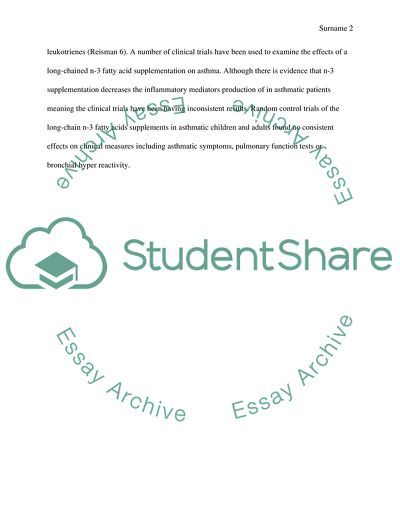Specific fatty acids and disease Assignment Example | Topics and Well Written Essays - 250 words. Retrieved from https://studentshare.org/health-sciences-medicine/1622037-specific-fatty-acids-and-disease
Specific Fatty Acids and Disease Assignment Example | Topics and Well Written Essays - 250 Words. https://studentshare.org/health-sciences-medicine/1622037-specific-fatty-acids-and-disease.


